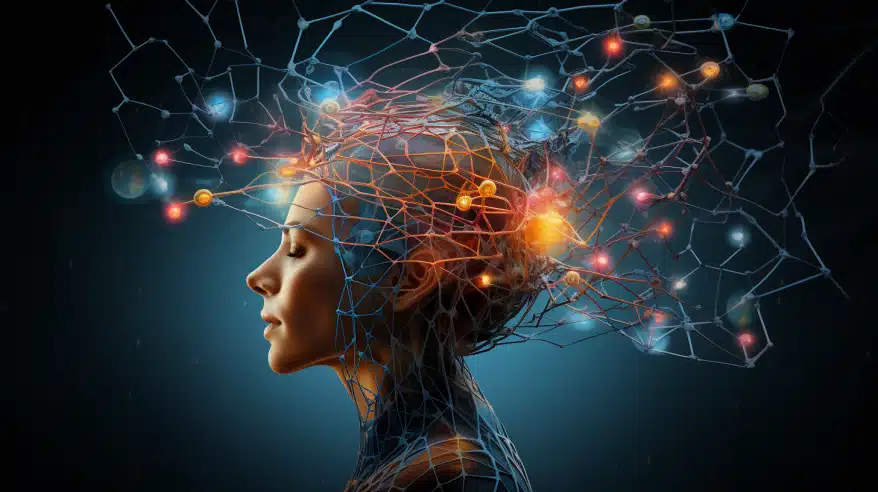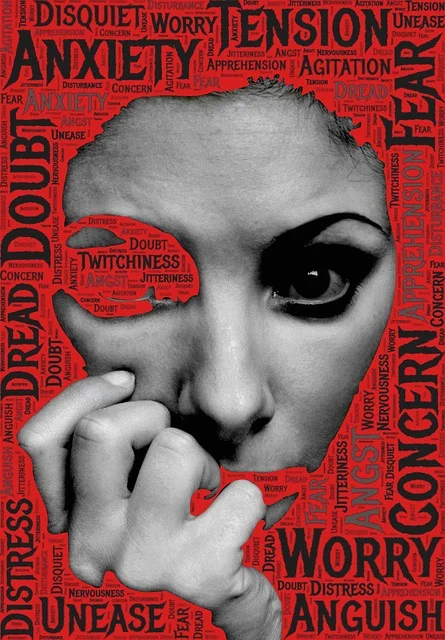Introduction – Understanding Major Depressive Disorder
Depression is more than sadness — it’s a deep, often invisible weight that can affect how a person thinks, feels, and lives. According to the DSM-5 (Diagnostic and Statistical Manual of Mental Disorders, Fifth Edition), Major Depressive Disorder (MDD) is a serious mental health condition characterized by persistent sadness, loss of interest, and changes in daily functioning that last for at least two weeks.

Millions of people worldwide experience major depression, yet many still misunderstand it as simply “feeling down.” In reality, MDD involves biological, psychological, and social factors that influence mood, motivation, and energy. It can affect anyone — regardless of age, gender, or background — and its impact often reaches far beyond the individual, touching families, relationships, and communities.
What Is Major Depressive Disorder (MDD)?
Major Depressive Disorder is a clinical diagnosis — not just sadness or burnout. It involves prolonged emotional and physical symptoms that interfere with one’s ability to function in everyday life.
Key Characteristics
- Persistent feelings of sadness or emptiness
- Loss of interest or pleasure in activities once enjoyed
- Difficulty thinking, concentrating, or making decisions
- Changes in sleep, appetite, and energy levels
- Feelings of guilt, hopelessness, or worthlessness
According to DSM-5, to be diagnosed with MDD, an individual must experience at least five or more symptoms for a minimum of two consecutive weeks, and these symptoms must cause significant distress or impairment in social, occupational, or daily functioning.
What Are the Five Symptoms of Major Depressive Disorder?
While depression can look different for everyone, there are five hallmark symptoms that most commonly appear in MDD. These core signs form the basis for clinical diagnosis under DSM-5 criteria.
1. Persistent Sadness or Depressed Mood
The most defining feature of major depression is a long-lasting, deep sadness that doesn’t go away easily. People often describe it as:
- Feeling “numb,” empty, or hopeless.
- Crying without knowing why.
- Waking up feeling sad even after positive events.
It’s not a fleeting emotional dip — it’s a constant heaviness that colors every part of life.
2. Loss of Interest or Pleasure (Anhedonia)
Activities that once brought joy — hobbies, food, socializing, even favorite shows — suddenly feel meaningless. This emotional disconnection, called anhedonia, often isolates people further because they withdraw from things they once loved.
3. Fatigue or Loss of Energy
Depression can drain physical and emotional energy. Even simple tasks like getting out of bed, showering, or cooking can feel overwhelming. People often describe it as moving through thick fog or feeling “weighed down.”
4. Changes in Sleep and Appetite
Depression affects the body’s natural rhythms:
- Some people sleep excessively (hypersomnia).
- Others experience insomnia, waking up early or struggling to fall asleep.
- Appetite can decrease, leading to weight loss, or increase due to emotional eating.
These changes further impact mood and motivation.
5. Feelings of Worthlessness or Guilt
A deep sense of inadequacy often accompanies depression. Individuals may feel guilty for things beyond their control or believe they’re a burden to others. Self-critical thoughts like “I’m not good enough” become constant mental noise, worsening the cycle of depression.
What Are the 8 Symptoms of Major Depressive Disorder?
Beyond the five core signs, the DSM-5 outlines several more symptoms that help clinicians diagnose depression. While each person’s experience is unique, these eight major symptoms often appear together during a depressive episode:
- Persistent depressed mood most of the day
- Markedly diminished interest or pleasure in activities
- Significant weight change or appetite disturbance
- Insomnia or excessive sleeping
- Psychomotor agitation or retardation (restlessness or slowed movements)
- Fatigue or loss of energy nearly every day
- Feelings of worthlessness or excessive guilt
- Diminished ability to think, concentrate, or make decisions
Some people also experience recurrent thoughts of death or suicide, which require immediate professional attention.
Understanding the Emotional Impact
Depression is not always visible. Many people with MDD continue working, parenting, or smiling in public — often called “high-functioning depression.” Inside, though, they may be struggling to hold things together, battling constant fatigue and emptiness.
Recognizing these symptoms early can lead to faster intervention and recovery.
How Do You Know If You’re in a Depressive Episode?
Knowing the difference between “feeling down” and experiencing a depressive episode can be life-changing. A depressive episode refers to a period — usually lasting at least two weeks — when multiple symptoms of MDD appear together and severely affect daily functioning.
Common Signs You’re in a Depressive Episode
- You wake up dreading the day, even without a clear reason.
- Everything feels heavier — simple tasks seem impossible.
- You lose interest in friends, hobbies, and even eating.
- You feel detached, like you’re watching life instead of living it.
- You have trouble concentrating or remembering details.
- You feel persistent guilt or shame about yourself or the past.
- You experience physical aches, fatigue, or changes in sleep.
Behavioral and Emotional Clues
A depressive episode may show up subtly — ignoring texts, avoiding responsibilities, or struggling to make eye contact. Loved ones might notice personality shifts: irritability, social withdrawal, or emotional numbness.
When to Seek Help
If these feelings persist for more than two weeks and interfere with your daily life, it’s time to seek professional help. A mental health provider (psychiatrist, psychologist, or licensed therapist) can evaluate your symptoms, rule out physical causes, and recommend a personalized treatment plan.
There is no shame in reaching out — depression is a legitimate medical condition, not a sign of weakness. Early help prevents deeper suffering.
What to Do During a Major Depressive Episode
Living through a depressive episode can feel like being trapped in slow motion while the world rushes by. Healing takes time, but small steps can make a big difference. Here’s what you can do to manage symptoms and move toward recovery.
1. Reach Out for Professional Help
A qualified therapist or psychiatrist can guide diagnosis and treatment. Treatment often includes:
- Psychotherapy (Talk Therapy): Cognitive Behavioral Therapy (CBT) helps reframe negative thought patterns. Interpersonal Therapy (IPT) focuses on relationships and social support.
- Medication: Antidepressants such as SSRIs or SNRIs may help regulate brain chemistry. Always consult a psychiatrist before starting or stopping medication.
- Combination Therapy: Often, the best results come from using both therapy and medication together.
2. Create a Support System
Depression thrives in silence. Reach out to friends, family, or support groups who understand mental health struggles. Simply talking about how you feel can relieve emotional pressure.
If you don’t have someone to confide in, consider online therapy or community hotlines for support.
3. Take Care of Your Body
Mental health and physical health are deeply connected.
- Try to maintain a consistent sleep routine — go to bed and wake up at the same time daily.
- Eat nourishing meals, even when your appetite is low.
- Engage in gentle exercise, like walking or yoga; it releases endorphins that improve mood.
4. Practice Mindfulness and Self-Compassion
During a depressive episode, your inner critic can become loud and cruel. Practicing mindfulness — focusing on the present moment — helps interrupt negative thought cycles.
Simple activities like deep breathing, journaling, or gratitude listing can foster small moments of peace.
Remember: you are not lazy, broken, or weak — you are experiencing an illness that deserves compassion and care.
5. Avoid Isolation
Depression often convinces you to pull away from the world, but connection is a key part of healing. Even short, low-pressure interactions — like a brief chat with a friend or a walk outside — can make a difference.
6. Develop Small, Realistic Goals
Setting small daily goals — showering, going for a walk, cleaning one room — helps restore a sense of control and achievement. Each step forward is progress, no matter how small.
7. Avoid Substance Use
While alcohol or drugs might seem to offer temporary relief, they often worsen depressive symptoms and interfere with treatment. Opt for healthy coping strategies instead.
8. Emergency Action for Severe Depression
If you or someone you know is experiencing suicidal thoughts or urges, seek immediate help:
- Contact your local emergency number.
- In the U.S., call or text 988 (Suicide and Crisis Lifeline).
- In Pakistan or South Asia, reach out to Umang Pakistan, Rozan Helpline for support.
Your life matters — help is available 24/7.
The Emotional Side of Major Depressive Disorder
Major depression doesn’t just affect the brain — it touches the soul. It can steal color from life, make joy feel foreign, and convince you that things will never change.
But depression is treatable. With time, professional help, and self-compassion, many people fully recover and regain control over their lives.
It’s important to remember that you are not your depression. It’s something you experience, not who you are. The road to healing is not linear — there will be good and bad days — but every small step counts.
Coping Strategies and Long-Term Management
After initial treatment, preventing relapse and maintaining emotional balance is key.
1. Continue Therapy
Even after symptoms improve, therapy helps identify triggers and develop long-term coping tools. Regular sessions can prevent relapse and strengthen emotional resilience.
2. Build a Wellness Routine
Include activities that nurture mental health:
- Regular sleep schedule
- Balanced diet
- Exercise and outdoor time
- Creative outlets like music or journaling
- Time with supportive people
3. Monitor Warning Signs
Recognizing early warning signs — fatigue, loss of motivation, negative thinking — allows for early intervention before a full relapse.
4. Stay Connected
Joining a support group or online community can reduce isolation and offer encouragement. Sharing experiences often helps people realize they’re not alone.
5. Purpose and Self-Acceptance
Finding meaning — whether through work, volunteering, art, or spiritual practice — restores hope. Depression often silences purpose; reclaiming it reignites life.
Conclusion – Healing from Major Depressive Disorder
Major Depressive Disorder is a complex, deeply human condition that can affect anyone. It is not a flaw, a weakness, or a failure. It is a treatable mental health disorder that deserves understanding, compassion, and support.
Recognizing symptoms — from sadness and loss of interest to fatigue and hopelessness — is the first step toward recovery. During depressive episodes, reaching out for help, following treatment, and practicing small acts of self-care can lead to profound change.
If you or someone you love is struggling, know this: you are not alone, and healing is possible. Depression can make life feel small, but with help, life expands again — with light, color, and connection.



